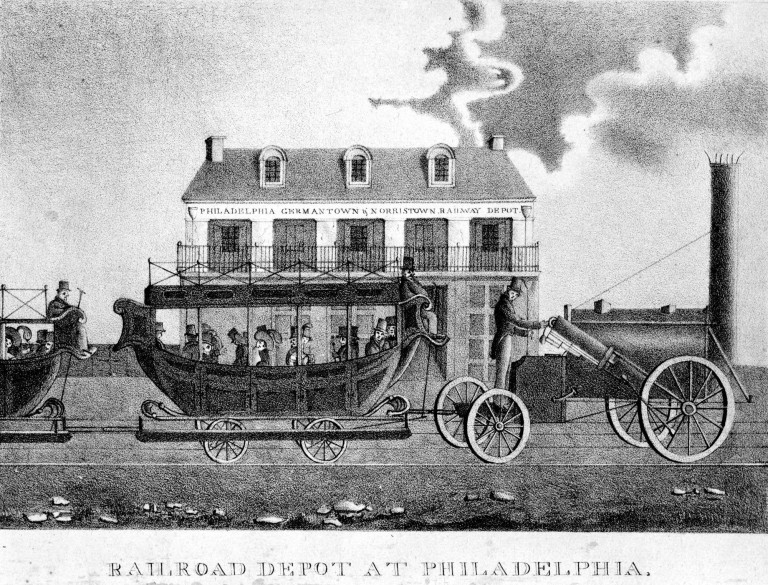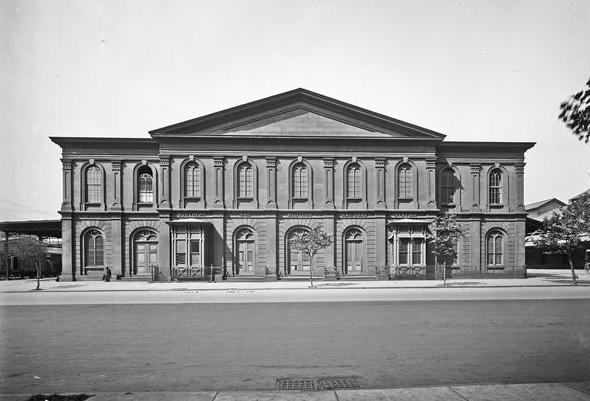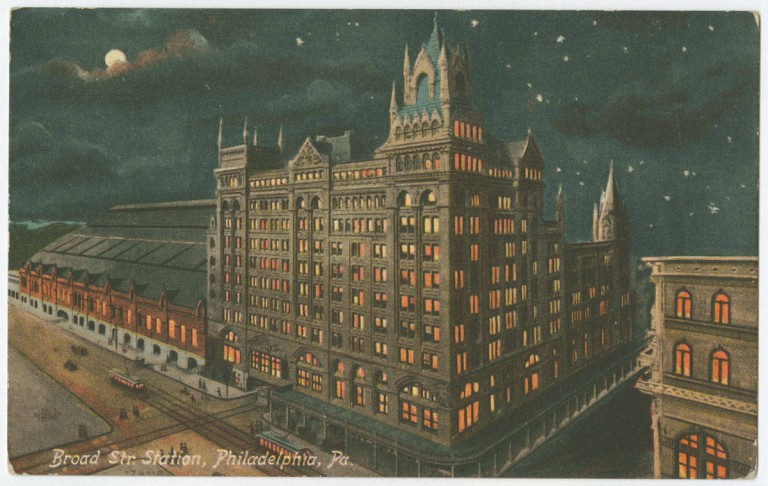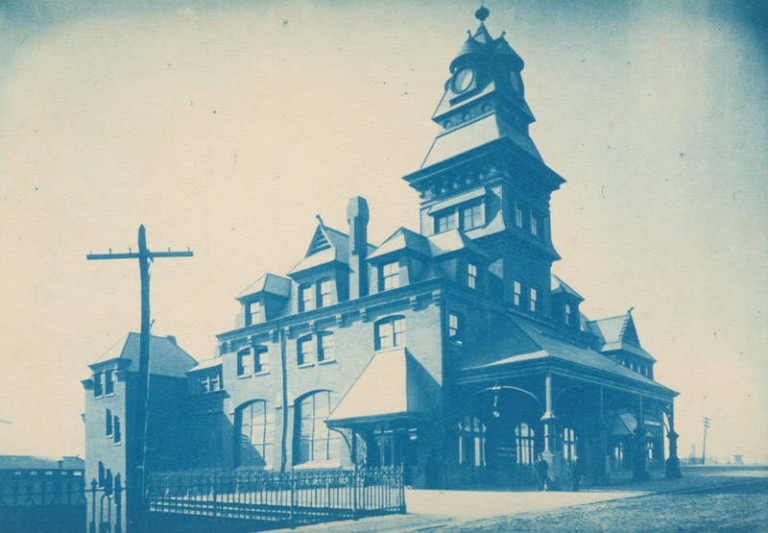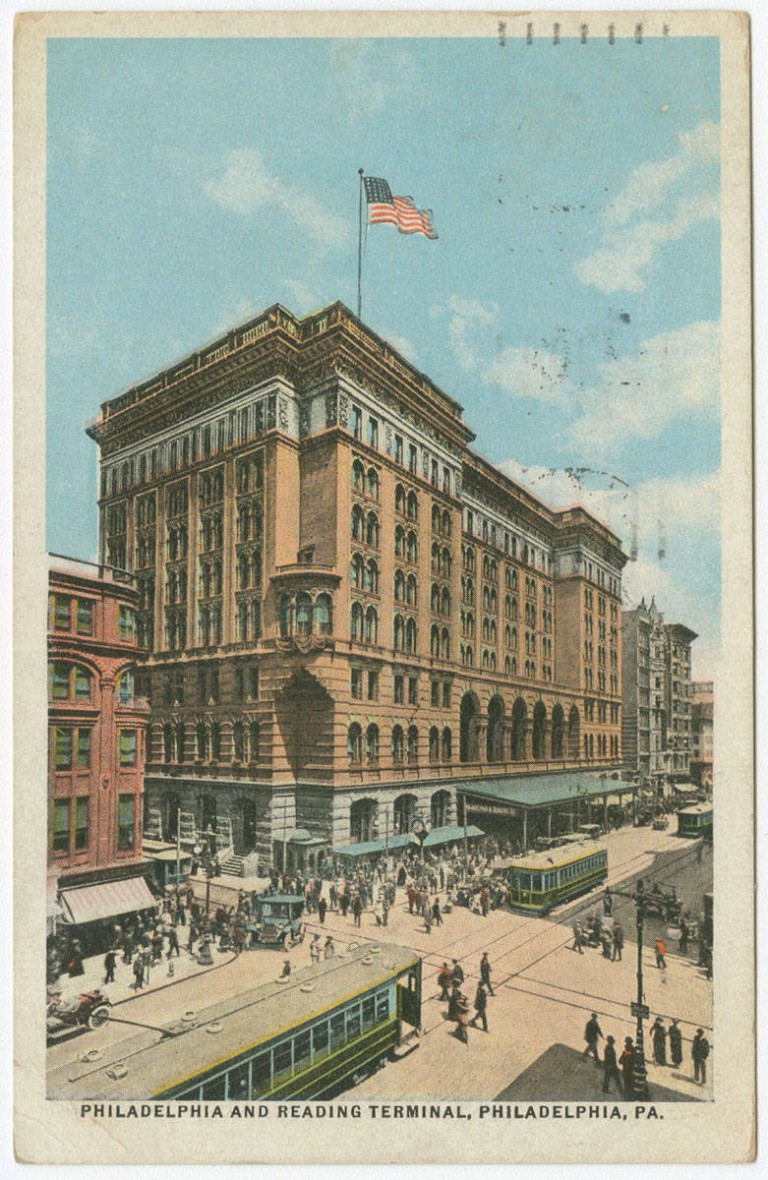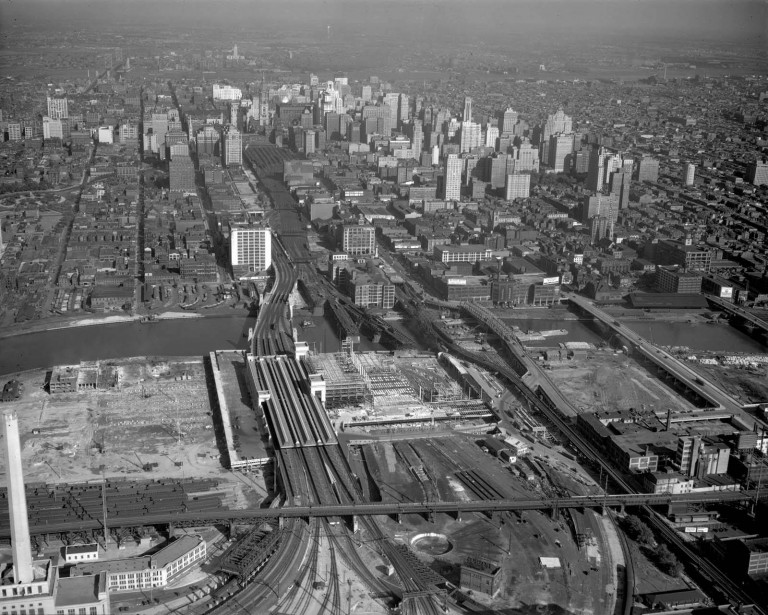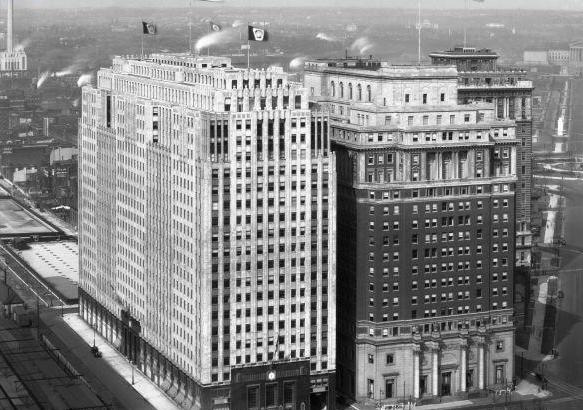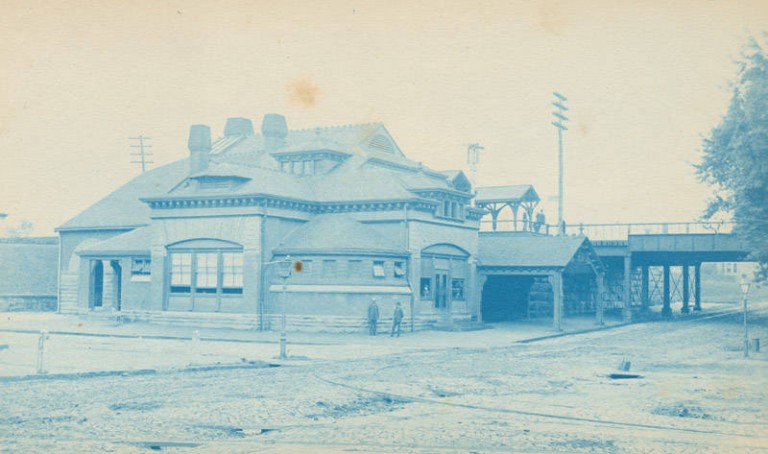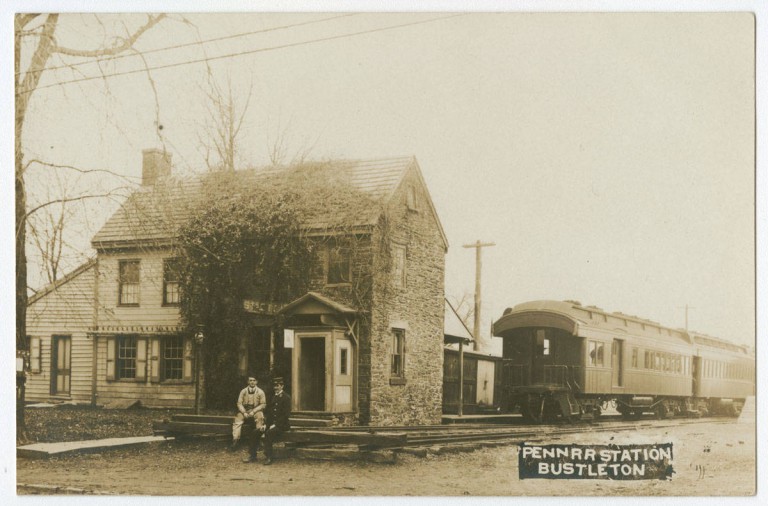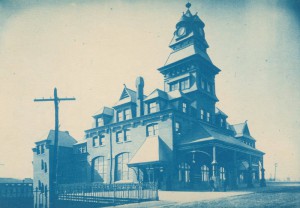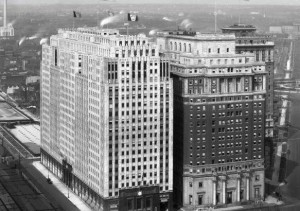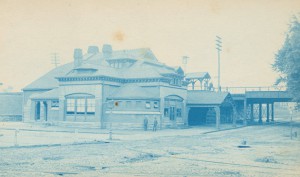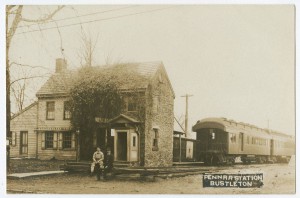Railroad Stations
By John Hepp
Essay
Railroad stations in Greater Philadelphia evolved with the railway industry into a wide variety of forms and functions. For most passengers and casual observers, railroad stations are buildings, but for the railways, these locations are also key operating points for loading and unloading passengers and freight. The vast majority of railroad stations in the Philadelphia region were small and served surrounding local communities, but a few monumental terminals were constructed in Center City Philadelphia and in the downtowns of the region’s secondary cities: Atlantic City, Camden, and Wilmington.
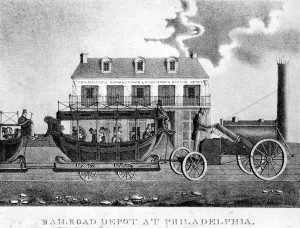
The major passenger stations serving central Philadelphia went through four distinct phases in the city’s history. Initially, during the 1830s and 1840s, small, independent railroads attempted to locate their passenger facilities on the fringes of the built-up portion of the city. Later, in the 1850s, the railways moved their by-then larger depots farther from the business district and began to rely on the new horse-drawn streetcars for final delivery of passengers. The third phase began in 1881, when consolidated railroad systems started to move their much larger passenger facilities back into Center City. Finally, with the opening of Pennsylvania (Thirtieth Street) Station in 1933, a grand station met the operational needs of the railroad and connected multiple forms of transport for the region.
The earliest railroad stations in Center City were very small structures that offered minimal services other than ticketing and baggage facilities. Starting in the 1850s, newer stations became larger and more architecturally elaborate, but for the most part they offered few additional services. The movement away from these mid-century buildings began in 1876 when the Pennsylvania Railroad built a new passenger station at Thirty-Second and Market streets in West Philadelphia and the Philadelphia, Wilmington & Baltimore substantially reconstructed its facility at Prime Street (later renamed Washington Avenue) in South Philadelphia to deal with increased traffic because of the Centennial Exhibition of 1876. These two depots were important transitional structures, built largely on the scale of the mid-century terminals but with far more complex interiors offering more services (such as restaurants). Both these stations fully separated passenger traffic from freight, which typically had not been the case in earlier structures.
The trends begun in these 1876 stations became fully articulated in the three main depots built by the railways in Center City in the 1880s and 1890s. Broad Street Station, the Baltimore & Ohio facility at Twenty-Fourth and Chestnut streets, and Reading Terminal were exclusively passenger structures with complex, well-defined interiors offering a multitude of services. All three had large train sheds protecting passengers from weather while they boarded the trains. These train sheds, soaring structures made of glass and steel, were physical manifestations of Americans’ love of technology and reflected trends in Victorian architecture and engineering that also characterized the era’s world’s fairs and new department stores.

The first of these grand stations to open, in 1881, was the Pennsylvania Railroad’s Broad Street Station, which was qualitatively different from any previous depot in Philadelphia. Its façade, in the style and scale of a great London Victorian railway terminus, was unlike that of any existing railroad structure in the city. Closely resembling the recently completed St. Pancras station in London, the initial structure’s Gothic design by the Philadelphia firm of Wilson Brothers looked more like a massive church than a train station. Located directly across the street from Philadelphia’s still under-construction City Hall, it was a fitting temple to both the power of Philadelphia’s most influential corporation—the Pennsylvania Railroad—and the pretensions of the growing metropolis. In 1892, when the station needed to be enlarged because of the continuing expansion of the Pennsylvania Railroad and growing commuter traffic, Philadelphia architect Frank Furness (1838-1912) designed a significant addition in his eclectic modern style. The station also gained a new train shed, the largest single-span train shed in the world at the time.
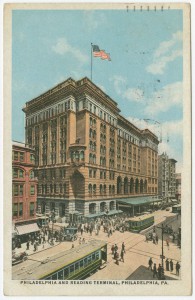
Reading Terminal, at Twelfth and Market Streets in Center City Philadelphia, opened in 1893. When the Reading acquired the site it was a public farmers market, and the railroad agreed to accommodate the market on the ground level of the station under the train shed (the Reading Terminal Market ultimately outlasted the use of the station by trains). The Reading Terminal headhouse, an Italian Renaissance design by New York architect Francis H. Kimball (1845-1919), known for his work with terra-cotta, contained the offices of the Reading Railroad and was coupled to a train shed built by Wilson Brothers. After rail service to Reading Terminal ended in 1984, the train shed and headhouse became part of the Pennsylvania Convention Center and Marriott Hotel.
The final grand depot to serve Philadelphia was Pennsylvania (30th Street) Station, opened in 1933 by the Pennsylvania Railroad in West Philadelphia. Designed by Alfred Shaw (1895-1970) of the Chicago firm Graham, Anderson, Probst and White in a transitional neoclassical, art deco style, it was one of the last major railway passenger stations constructed in the United States. (Cincinnati Union Terminal opened in the same year, and only Los Angeles Union Passenger Terminal, opened in 1939, is on the same scale and later).
Pennsylvania Station formed part of a complex that also included a new main post office for the city and a distribution center for the Railway Express Agency. It was built as part of a Pennsylvania Railroad scheme known as the “Philadelphia Improvements,” a series of projects to improve efficiency by enabling passenger trains to easily operate throughout Philadelphia without having to stop and reverse in Center City. The projects also included Suburban Station near Sixteenth and Market Streets, so that Broad Street Station might be abandoned and its site and approaches redeveloped as commercial offices. The Great Depression and World War II delayed the full implementation of this plan until 1953.
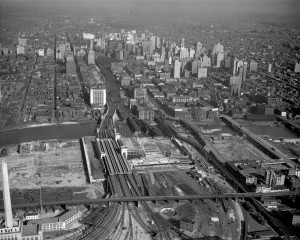
Because of competition between the Pennsylvania Railroad and the allied Reading/Baltimore & Ohio system in the late nineteenth and early twentieth centuries, secondary urban centers of the region all had multiple train stations that were smaller versions of Philadelphia’s grand depots. This pattern existed in Wilmington, Delaware; Camden and Trenton, New Jersey; and Chester and Reading, Pennsylvania, but its best example was in Atlantic City. In the first two decades of the twentieth century, three rail lines linked Camden and Philadelphia with Atlantic City, which had a variety of grand but small stations. After the competing companies merged into Pennsylvania-Reading Seashore Lines, a new station that looked like a small version of Philadelphia’s Pennsylvania Station opened in 1934.
The local or community stations in the Greater Philadelphia area can be classified in four ways. In the late nineteenth and early twentieth centuries, the most common type of station provided service for passengers, express, and mail. Even the electric local trains introduced in the early twentieth century on the Pennsylvania and the Reading had combination cars that provided for all these services. The express service permitted both national shippers and local merchants (such as department stores) to deliver goods throughout the region before highway delivery services became common. A second type of station, common through the middle of the twentieth century, also combined passenger, freight, express, and mail service, but in an integrated complex of buildings. Many an awkward early-twenty-first-century commuter parking lot is located where a small freight facility used to adjoin a passenger station.
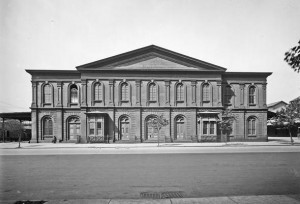
Stations that served passengers only were uncommon until the middle of the twentieth century, but by the twentieth-first century they were the most common type operated by Amtrak, SEPTA, and NJ Transit. A small number of freight-only stations operated through the late twentieth century, often in industrial areas of the region. As transport of less-than-a-carload freight by rail declined because of truck competition, these facilities closed.
Architecturally, community stations were a varied lot. The railroads’ engineering departments built many of wood and by common designs, while architects designed some, especially those serving wealthy suburbs. Philadelphia’s Frank Furness not only designed central stations in Philadelphia and Wilmington for the Pennsylvania and the Baltimore & Ohio but also more than one hundred smaller stations for the Reading, many in Greater Philadelphia.
In the early twenty-first century, railroad stations continued to change. Some were rebuilt for further passenger use, others became stores, residences, and offices, and still others have been preserved for their architectural distinctiveness and their connection to an age when railroads and their stations were the primary mode of transportation in Greater Philadelphia. A total of thirty of stations in Greater Philadelphia–ranging from small community depots to Pennsylvania (Thirtieth Street) Station and Reading Terminal–have been placed on the National Register of Historic Places for their architectural significance.
John Hepp is Associate Professor of History and co-chair of the Division of Global History and Languages at Wilkes University in Wilkes-Barre, Pennsylvania. He teaches American urban and cultural history with an emphasis on the period 1800 to 1940. (Author information current at time of publication.)
Copyright 2015, Rutgers University.
Gallery
Backgrounders
Connecting Headlines with History
- 30th Street Station project aims to create more hospitable public space (WHYY, September 19, 2011)
- Amid 30th Street motion, stationary space planned (WHYY, September 19, 2011)
- Proposed Amtrak investments could halve Philly-NYC travel time (WHYY, July 10, 2012)
- Jazz pops up at Reading Terminal Market (WHYY, April 16, 2014)
- Fattah wants to rename 30th St. Station in honor of Bill Gray (WHYY, June 13, 2014)
- New service delivers Reading Terminal Market goods to your doorstep (WHYY, September 12, 2014)
- Then and Now: Reading Terminal Market [photos] (WHYY, December 23, 2014)
- New boss at Reading Terminal Market wants to build on success (WHYY, June 11, 2015)
Links
- The Pennsylvania Railroads Philadelphia Improvements, Part I (PhillyHistory Blog)
- The Pennsylvania Railroads Philadelphia Improvements, Part II (PhillyHistory Blog)
- Pennsylvania Station Historical Marker (ExplorePAHistory.com)
- Reading Terminal and Market Historical Marker (ExplorePAHistory.com)
- Philaplace: Reading Terminal Market (Historical Society of Pennsylvania)
- Gray Area: the Future of 30th Street Station (Hidden City Philadelphia)
- Tracing the 'Chinese Wall' in Center City (Hidden City Philadelphia)
